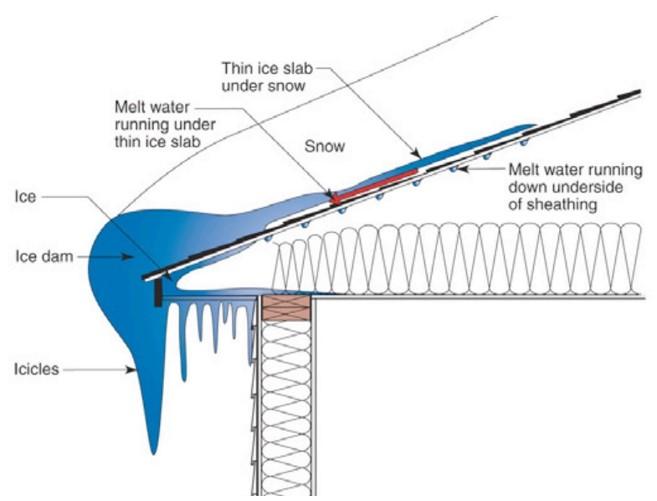
Roofing
Eaves Sealed in Cold Climates
Sealing the eaves in cold climates can help prevent the water from seeping through roof shingles and underlayment. Sealing the eaves should be done in Climate Zone 5 and higher. It is accomplished using a self-sealing bituminous membrane with a peel-and-stick adhesive backing or a similar product.
Cold climates present a special challenge to a home's roof. During the cold months when snow and freezing rain fall, freeze-thaw cycles can lead to the formation of ice dams. These occur when warmth from the attic causes roof snow to melt and flow to roof eaves. When water refreezes at the colder overhang it can form a buildup of ice, causing more snowmelt to puddle. Eventually, the water can back up between the shingles then saturate and penetrate the roof underlayment and begin leaking into the attic.
Good air sealing of the ceiling plane and/or roof deck, adequate attic insulation, and ventilation of the attic (or roof assembly if over an unvented attic) can reduce or mitigate the heat transfer to the roof deck and subsequent snow melt and ice dam formation. Sealing the eaves is accomplished by using a peel-and-stick bituminous membrane product at the eaves. The membrane should be installed over the sheathing from the edge of the roof line to at least two feet up the roof deck from the interior plane of the exterior wall.